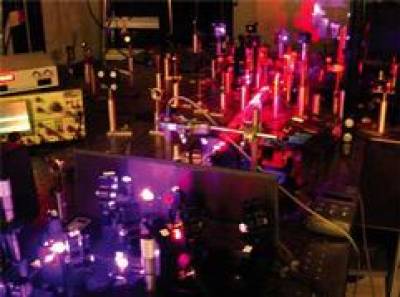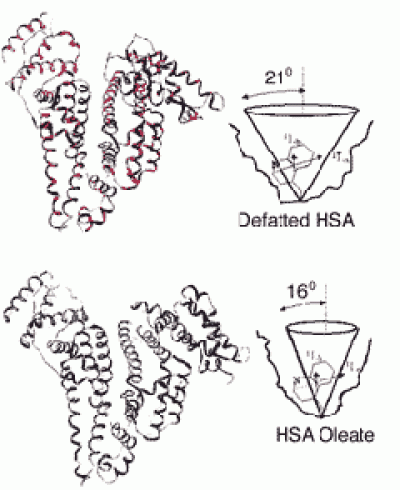Within the Atomic, Molecular, Optical and Positron Physics (AMOPP) group, we have a program of research aimed at applying physics techniques to biological and life science questions.
Dr. Isabel Llorente-Garcia, Dr Angus Bain, Dr Alexandra Olaya-Castro
Fluorescence microscopy
Molecular complexes that perform vital functions in live cells can be labelled with fluorescent tags which emit light when illuminated by the appropriate excitation light. Fluorescence microscopy provides valuable information about the location, number and arrangement of these complexes in the cell. When carried out in live cells (in vivo), it allows dynamic monitoring maintaining the native biological context and functionality in the living cell. Videos can be acquired with spatial resolutions of a few hundred nanometres and at tens of millisecond time scales, which, after image processing involving single-particle tracking, can help elucidate the mechanisms and functions of the biological complexes of interest.
Magnetic traps: tailored magnetic trapping potentials can be used for confining and manipulating micrometre-sized particles in solution. The particles can be previously functionalised and attached to biological complexes so that the magnetic traps can then be employed to exert and measure forces relevant to the function of the complexes. Combined with fluorescence microscopy, this technique provides a powerful tool for studies at the single molecule level and in real time in live cells. In this way, Physics can be applied to biomedical problems important to human health, in particular, those related to cell-surface interactions. For instance, we can try to understand the forces involved in the activity of cell-surface receptor molecules, such as those key to cancer growth, immune response or viral infection. The group of Dr. Isabel Llorente-Garcia applies fluorescence microscopy and magnetic force spectroscopy and manipulation to the study of mechanisms of receptor-mediated virus entry in live cells.
Ultrafast laser spectroscopy of biological systems
Ultrafast lasers - lasers that produce pulses of light as short as a few femtoseconds (1 femtosecond is 10-15 s)- can be used in experiments for single and multi-photon induced fluorescence as a means of investigating molecular probe dynamics in biological systems. These very short pulses of laser light can be used to measure the orientation and very fast rotation of molecules ('probes') when they are placed in an environment that restricts their motion. The probe is a chromophore, a molecule that absorbs light of one colour and re-emits is at a different one. By analysing the light emitted by the chromophore, particularly its polarisation, we can obtain information about the way the molecule is moving ('tumbling' and 'wobbling' motion), and so deduce the nature of the environment surrounding it. Highly ordered molecular environments can commonly be found in the biological sciences, for example, in cell membranes. This technique can be used to detect and measure changes in the biological environment from changes in the motion of the probe molecules. |   |
Dr Angus Bain works on the development of various picosecond and femtosecond laser spectroscopy techniques, as well as on novel developments in time resolved stimulated emission depletion (STED), time resolved polarised fluorescence techniques for the study of Förster resonance energy transfer (FRET) in biological systems and super resolution fluorescence microscopy via fluorescence lifetime image reconstruction with low power continuous wave stimulated emission depletion (CW STED).
Theoretical biophysics - quantum phenomena in biomolecular functions
It is well known that quantum mechanics explains the structure, stability and spectroscopy of the molecular components of living systems. What remains unknown (and controversial) is whether there are quantum coherent dynamics relevant for their biological functionality - features that have been selected by evolution. In order to achieve a theoretical understanding of the possible roles of quantum phenomena in biomolecular functions, Dr Alexandra Olaya-Castro works on theoretical studies of quantum approaches to photosynthetic complexes, non-classical features of electronic and vibrational dynamics in biomolecules, counting statistics and noise characterisation in charge and exciton transfer processes, and quantum thermodynamics of biomolecular processes.
Additional information
For more information on Biological Physics research areas and people within the Physics Department, please see:
 Close
Close

